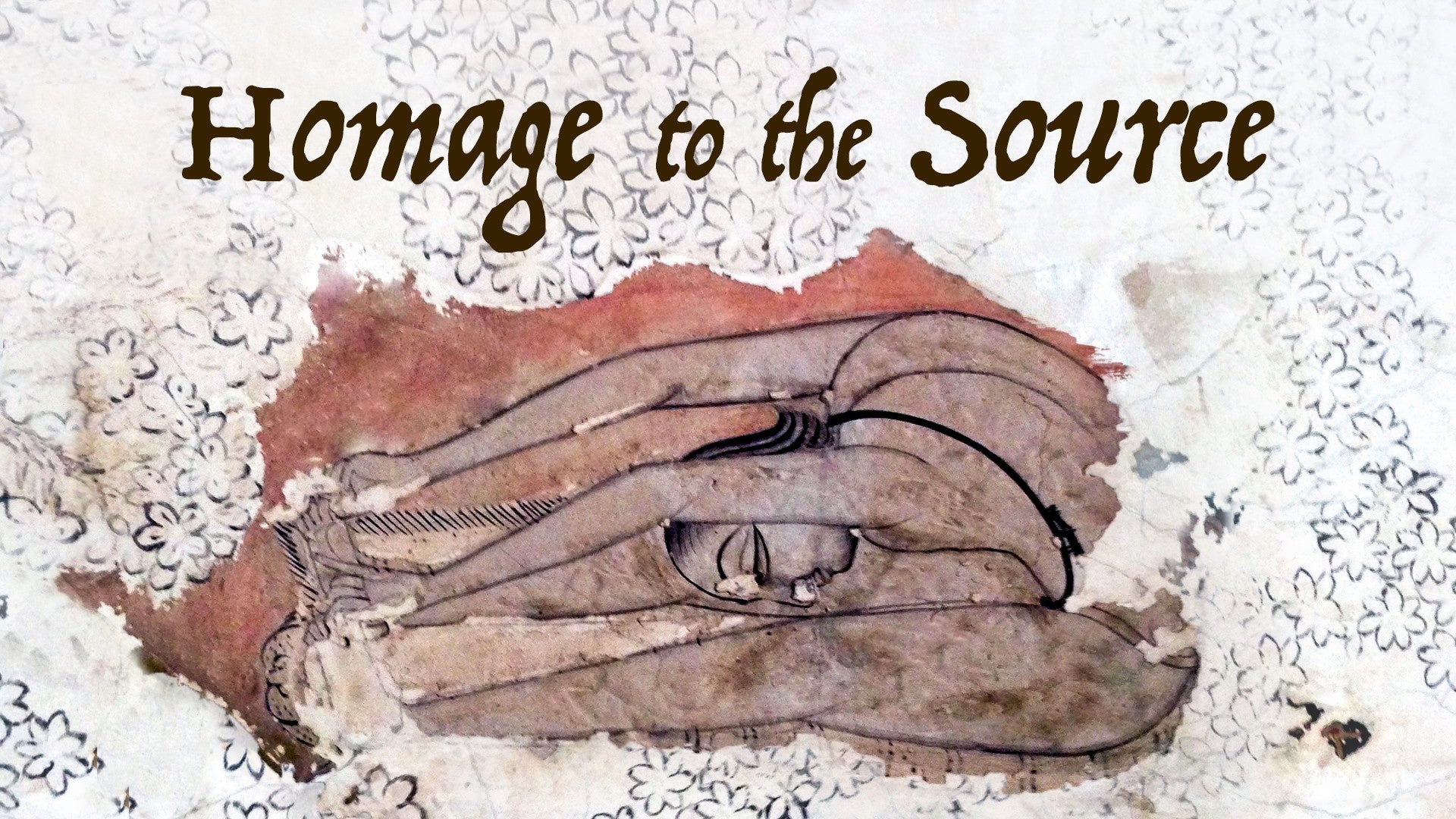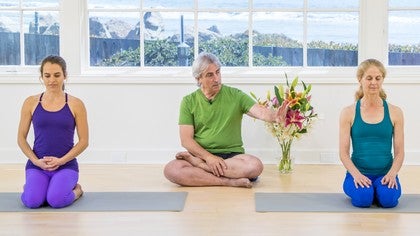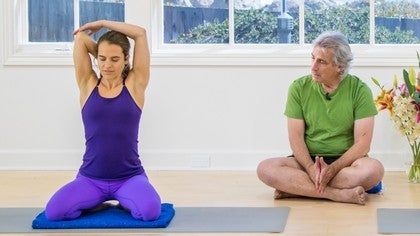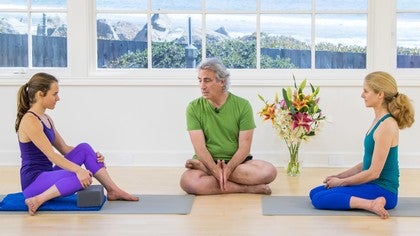Description
Richard demonstrates how we can incorporate Kapalabhati Pranayama (Skull Shining Breath) and the traditional Simhasana (Lion Pose) into our Vajrasana (Diamond Pose). Having a block handy may help you follow along with Betsy and Alana.
About This Video
Transcript
Read Full Transcript
Hi, I'm here with my good friends Betsy and Alana, and we're now going to demonstrate two poses consecutively. The first one is called Vajrasana, and that is a couple of different interpretations into English. The second one is called Simhasana, and that's called the Lion Pose. Now Vajra is a diamond usually, and there's an interesting story behind that. The diamond, of course, is the hardest substance, and it can cut through any other substance.
And so it represents spiritual knowledge, which is cutting through the hardest ignorance. But Vajra can also be a thunderbolt, which is sort of the shape of what this pose looks like when you're sitting in it. So I have Betsy sitting in the full pose, in which you sit on your heels, thighs together. Or thighs parallel maybe, maybe not exactly together. But I have Alana sitting on a block as the representative of the less experienced student.
Less experienced students often have a difficult time sitting on their heels. But when you do sit on a block, could you get up for just a second, please? You want to be sure that you sit across the block like this, not along the block like this. You want both sitting bones to be resting evenly on something. And also when you sit in a pose like this, this is very similar to a modern pose called Virasana.
What you want to do is be sure that the toes are slightly toed in. In other words, you look at the swell of the outer hip here, and the arch of the inner foot. And you want to match that arch to the swell of the hip. So this is called Vajrasana, the diamond pose, or if you prefer, the thunderbolt. And you can do several things with your hands as you see Betsy's resting your hands on her thighs and Alana in her lap.
After experimenting with the position of the palms in these exercises, it seems that when you put the palms down, as Betsy's doing, it feels more grounding. And when you bring the palms up like this, it feels more enlightening, so to speak. It makes the pose feel lighter. So you can play around with either one of those positions of the hands. And then, of course, there's lots of different mudras that you can use for your fingers.
If you like to do that, of course, the most typical one, these are called Hasta Mudras, by the way. The most common one, the one you see most often, is where you touch the index finger to the tip of the thumb. And of course, that represents the Paramatman, the great self, the jivatman, the embodied self. And these three separate fingers here represent the qualities of nature, the gunas. When I'm sitting in this position, I like to do a little bit of Kapalabhati.
Kapala means skull. Bhati means to cleanse or to brighten. So this is the skull brightener, the skull cleanser. And it's known as a kriya, a cleansing practice. It's not a formal pranayama.
And to be perfectly clear, Kapalabhati is only active with the exhalations. The inhalations are passive responses to the exhales. So it's not like bhastrika or bellows. And you want to start out very slowly and pick up the pace as you go along. So let's have, Ilana is going to use her, her, her, her fisted hands, and Betsy will just use her rectus muscle.
Now remember, you want to, you want to use just the lower part of the rectus abdominis, the part below the belly button, not the upper part. You want to keep that as soft as you can. So let's start off very slowly, just maybe one every two seconds or so. So the exhalation is active and very short. And the inhalation is a passive response to the exhalation, which sort of reverses the normal role of the breath, where normally the inhalation is the active phase and the exhalation the passive.
And as time passes and you become more comfortable with this, then you can start to make it a little bit more active and a little bit faster, if you like. Very good, kapalabhati. Now at the end of this exercise, I'd like to take one more big exhale and then lean forward. And I'm going to have Ilana stay as she is on the block. She can lean forward and cross her right ankle under her left.
Now this is not often easy to do for some people, to sit on that top heel. If that's the case, just stay in the diamond pose. Put your hands on your knees, palms pressing with the fingers spread out wide. Take a deep inhalation. You can do this too, Ilana.
Hands on the knees, stretch your arms out all the way, like that. Push the palms into the knees, yes. Grab the claws, take an inhalation, because we're on Santa Claus Road right now. Take an inhalation, and on the exhalation, stretch your tongue all the way out toward the tip of your chin, open your eyes, cross the look of the tip of the nose, and you know what to do. That was a very quiet line.
Roar, yes. And then come back and we'll do a little bit more Kapala body. So bring your hands together and then we'll start again. And Betsy, you can come back in the diamond pose now. And let's do a little bit more Kapala body.
Using the lower belly muscles. Now when Ilana presses against her lower abdomen with her fists, she wants to push in and up slightly. She wants to push toward the diaphragm. And again, I want to emphasize that you just use the lower belly muscles to do this, not the upper. Skull cleanser.
It's a good way to start an Asana practice. Good. And then one more big one, and then Betsy, you can lean forward and bring your left ankle under your right this time to cross the legs in the opposite direction. Good. And then inhale, hands to the knees, fingers spread out wide.
I want to hear a little bit of roar this time. On the exhalation, stretch out your tongue, cross your eyes. Remember to get those, ah, beautifully done. Thank you. Back into diamond pose for you please.
And that is how we do the diamond and the lion together. Thank you very much. Wonderful.
Homage to the Source
Comments
You need to be a subscriber to post a comment.
Please Log In or Create an Account to start your free trial.











